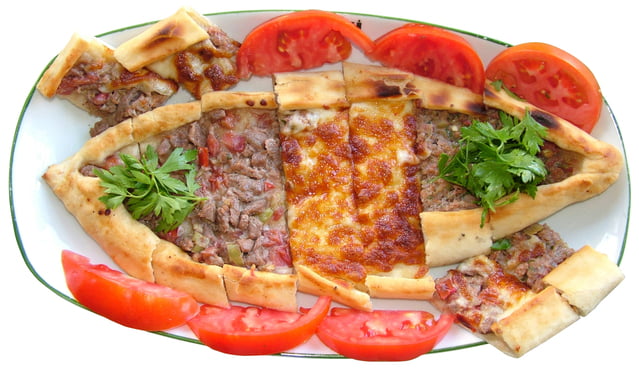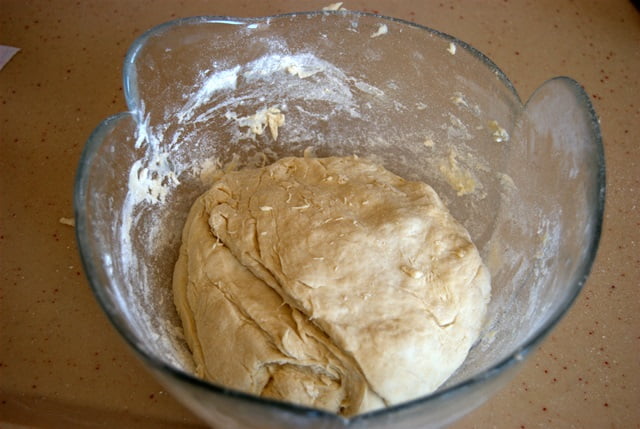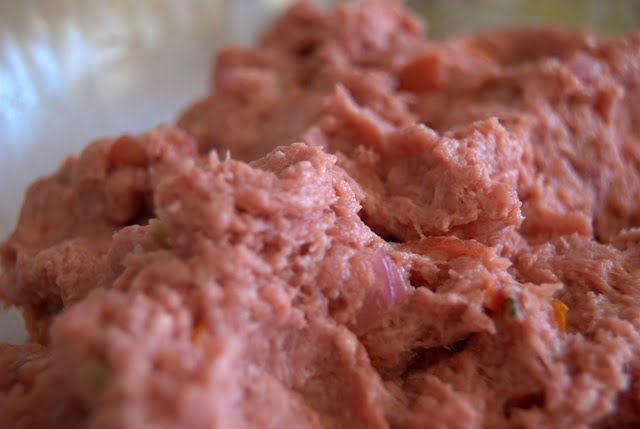Last week, I came across Expedia’s World on a Plate Challenge. It sounded interesting. Every month they feature a different country and bloggers participate by cooking a dish from that country. For the month of April, the country they are promoting is Turkey, so I decided to feature Turkish Pide.
Now I don’t normally cook. There is no need for me to be adventurous in the kitchen because as a single person it works out cheaper to order deliveries or head to my nearest Turkish lokanta (restaurant serving traditional Turkish cuisine). For example, the other day I ordered a delivery of tripe soup. It came with a large slab of melted cheese bread and a salad. The total cost including delivery was just 10 lira (3.50 USD or 2.50 GBP.)
However over the years, I’ve had numerous baking successes including lemon meringue pie, fudge and even doughnuts. My immediate thought was that to shift from baking sweet goods to cooking savoury food can’t be that hard, and I found a recipe for Turkish pide on Ozlem’s Turkish Table.
What is Turkish Pide?
It is the equivalent of pizza but the dough is thinner and some toppings such as an egg or mincemeat can seem strange to foreigners I don’t want to be rude and steal Ozlem’s recipe for this blog, so if you want to give it a go, head over to her website here. This is a good picture of what it should look like.

Making Turkish Pide
1st Step : The Dough
The recipe for the pide dough seemed quite simple. A combination of flour, salt, water, olive oil and yeast (Maya). Now before you scoff at me attempting to make something with yeast, I have used it before and had great success so didn’t think it would be a problem. Six packets later and the yeast finally frothed up but my mood was already dampened.

2nd Step: The Topping
This was straight forward because it was simply finely diced onions and peppers to be sautéed. I used red onion because the supermarkets quality of white onions would make a health inspector in the UK shut the shop down!

After softening the onion, and peppers, I added diced and de-seeded tomatoes as required and then a teaspoon of lemon juice, before mixing the ingredients with mince beef. (Lamb is a typical choice)
I was quite surprised at the addition of lemon juice but apparently it helps to break down the consistency of the meat. This was evident because the mince had turned a pinky colour

3rd Step : Putting It All Together
The rest was easy. I rolled the dough out into the traditional paddle shape. Folded the sides over and pinched the ends.

The topping went on
I forgot to brush it with beaten egg though!
It then went into an oven for 30 minutes at 180 C/ 350 F

Ta da!
I actually cooked something
But what did it taste like?
As soon as I took the Turkish pide out of the oven, I knew there was no way; it would be better than my local take-away. The meat had shrunk away from the sides, lost its soft taste and the dough just didn’t taste right. Bland and gooey in the middle.
I ate it reluctantly and then sulked off to the nearest bar to drown my sorrows, where the reason for my failure become apparent. While I was blaming the yeast, the bar owner mentioned that generally Turks do not cook Pide at home in the oven.
“It is all about the oven” he said
“You need one of those big wood burning old-fashioned ovens”
He meant the pizza ovens where they slide in the food on wooden boards. Apparently, most Turks only prepare the filling at home, then take it to the Pide shop, who will put it on the dough and bake it for 1.50 lira a slice. I learned something new and while I did feel I had wasted my time, it comforted me to know that I had just set my sights too high.
After all, can this girl who is used to making doughnuts and sweet pies, really match the work of an expert Pide maker who has grown up his whole life eating it?
PS: As a side note, I now have big respect for all you food bloggers out there. Trying to cook or bake, while taking photographs and writing is really hard work. Hats off to you! I will leave you to it, while I continue with my travel blogging!
Afiyet Olsun!
If you are interested in Turkish cooking, take a look at this list of the best food bloggers for this country.
